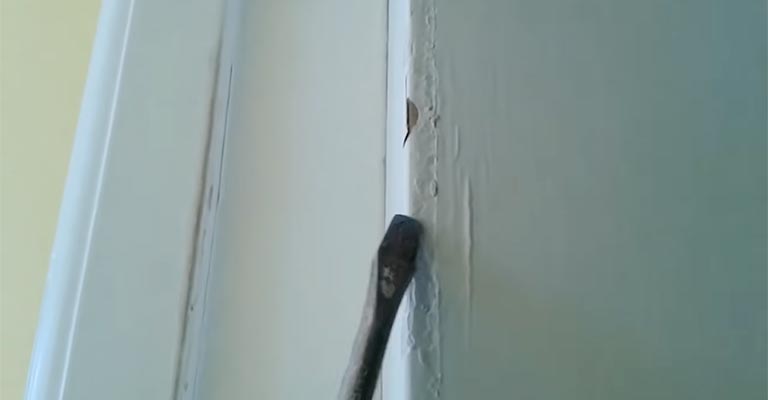Painting a door can be a satisfying home improvement project, adding a fresh and vibrant look to your living space. However, there’s a common issue that can arise after painting: the door sticking.
You’ve meticulously applied the paint to achieve the desired finish, but now your once-smooth door seems to have a mind of its own, sticking or jamming when you try to open or close it.
This frustrating problem is often a result of changes in the door’s dimensions or the buildup of paint in areas that were previously free moving.
Many factors can contribute to a painted door sticking to a door frame, including excessive paint, humidity-induced swelling, and improper fitting.
It is recommended to sand, seal, and paint a door before hanging it, and to let the paint completely dry before doing so.
It depends on the type of paint used how long it takes to dry. In the event that the problem becomes overly frustrating, there are ways to correct the problem.
What Causes Door Sticking After Painting & How To Fix It
Sticking doors are caused by a variety of factors that we can categorize into two categories: external and internal.
Obviously, external factors like climate and temperature cannot be avoided, but certain adjustments can be made to prevent these factors from having such an impact.
As for internal factors, they include the type of paint you choose, how you adjust your door hinges, what kind of lubricant you use, and how you sand your door.
To help you better understand the problem, let’s examine some of the most common reasons why doors jam due to sticking.
Hinge Sagging
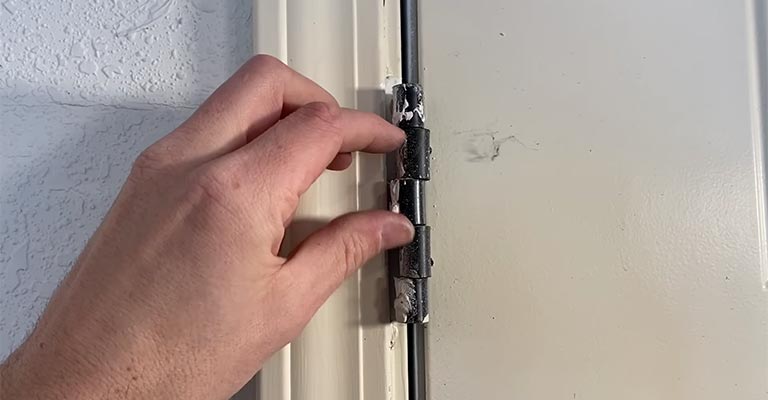
A thick coat of paint can cause the door to grow too big for the hinges you are currently using in some cases, especially if you did not install the door properly after painting it.
It is also possible that the hinges are sagging, which would also cause the door to stick to its frame.
Adjusting The Hinges
The paint may stick to the frame when the door is closed because thick paint makes the door too big for the frame. It may be necessary to yank the door to open it or shove it to close it securely.
The hinges can sometimes be adjusted or tightened to resolve sticking paint. The hinges should be tightened first, then inspected for improvement.
The other method of adjusting the hinge involves removing the long screws and replacing them with longer ones.
Nevertheless, if this does not reduce the paint sticking, you may need to remove the hinges. Wood putty should be used to fill in the holes on the side.
The door top should be spaced from the frame so that the frame can be closed around it. Place a mark on the door to show how the hinges should be repositioned. The hinges should be installed in the lower positions after drilling new holes.
Too Much Paint Was Added
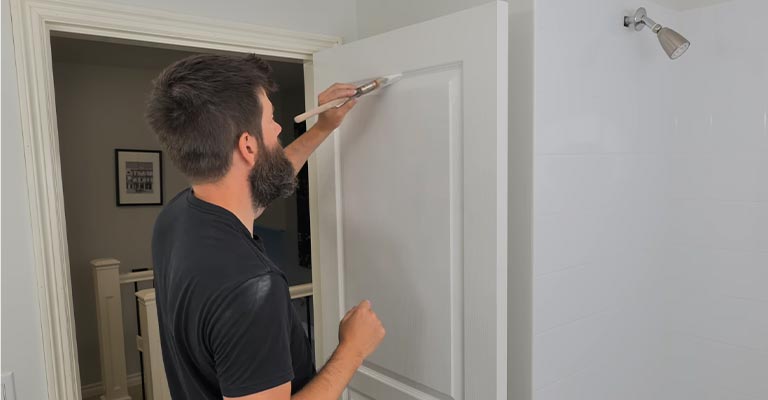
It’s easy to use way too much paint to get the desired saturation and coverage when painting the entire door.
A sticky finish can result from paint buildup on the door and thick brush strokes remaining on the surface.
You will often notice that paint buildup will prevent a door from closing, and it will cause a jam in most cases.
Lubricants
To reduce sticking, lubricate doors that stick to the frame. Reduce sticking by rubbing a dry bar of soap, paraffin wax, petroleum jelly or a household lubricant spray on the top and edges of the door.
The edges and top of the door can be temporarily fixed by applying a lubricant. If the door sticks to the frame, there may be underlying causes that may not involve the paint; the door may not be hung correctly or the hinges may be sagging.
Planing Or Sanding
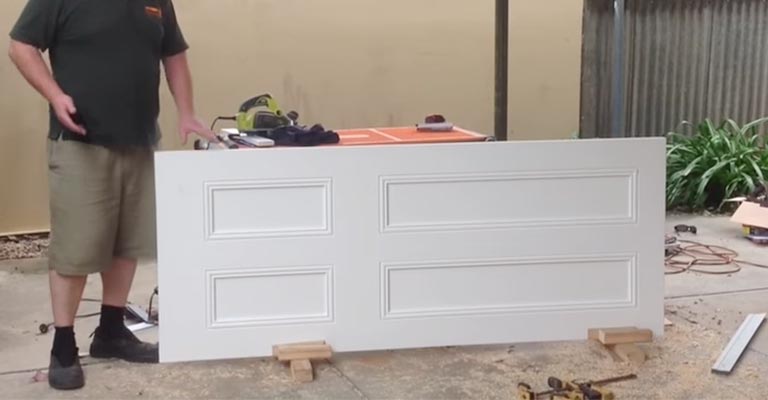
It is possible to sand or plane the sticking painted door top or edges. The paint can sometimes be too thick. Depending on where it sticks, sand the top or edges of the door.
In order to prevent problems with the latching mechanism, it is recommended to sand the hinge side of the door. Sand the paint away with a coarse grit, followed by a fine grit.
It is also recommended to remove excess layered paint with a wood chisel and sand smooth afterwards. In order to allow the door to swing within its frame, a small amount of wood must be removed from the top of the door.
You can check where the door or frame is touching and sticking by inserting cardboard between the top and bottom of the door. Remove the door and mark the sticking spots with a pencil.
Over the marked spots, use a jack plane to shave the door in the direction of the corner to the center. Fine-grit sandpaper should be used to sand the planed area. Use a level to ensure the planed area is even. The planed area can then be painted.
Swelling Caused By The Climate
As the weather and seasons change, doors may swell. Wood doors and frames swell when exposed to moisture and heat. A door or frame contracts in cold weather.
The frame may stick to a swollen door. Moisture absorption shouldn’t be an issue if the door is properly sealed. It is possible for an unsealed or old door to absorb moisture, which can lead to the wood drying out and cracking.
As the climate changes, the painted door that sticks to the frame will eventually contract, reducing or eliminating the sticking.
Oil-Based Paint
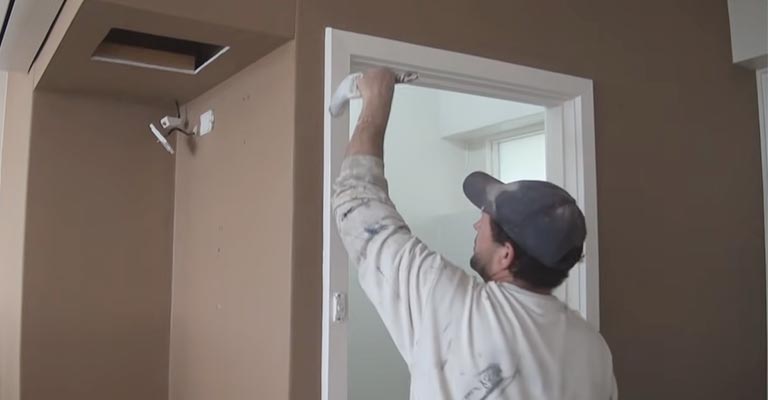
Painting with oil-based paint requires allowing it to dry properly, which is rather time consuming.
Although oil-based paints tend to be durable and high-quality, painting with them is a bit of a challenge because they need to dry completely before the second coat of paint can be applied.
There is a common mistake made by people who hang their oil-based painted door after only 6-8 hours. Even though the door appears dry, it won’t be completely dry until 24 hours have passed.
Is There A Way To Stop The Paint On The Door From Sticking Even If I Haven’t Painted It?
“My house’s doors make a very loud “unsticking” sound when you open them for some reason.
This house has not been painted for five years, so the sound seems to come from the contact area around the frame, where the door touches the frame.
As I am a night owl, I usually wake my wife up when I open doors because of this loud “unsticking” noise.
Would it be possible for me to make our home’s doors open more quietly without the sound of them sticking?”
This is a problem I found on a forum, and here is the answer:
The outside edges of the door and the inside of the door frame are painted. It’s not a good idea to use paint as a lubricant.
It is also possible that the door has not been installed so that it can be painted, or it may need three coats if it is an older house.
A humid day, along with the door expanding, causes the paint to rub against the paint on the other side.
The offending parts could be sanded or stripped down until they are no longer in contact (and possibly repainted with a single coat if necessary).
The only improvement I would expect from sanding would be to “rough it up” a bit and increase friction.
Currently, we use latex paint, which is awful. I’ve found that applying clear wax (paraffin wax) to the door jambs works best. Worked for me.
Final Words
Your freshly painted door sticking to the door frame can be quite frustrating, not only because it can be an annoying noise, but also because it can make the door harder to use.
This issue can be caused by a couple of common reasons, which we have discussed in detail to prevent it from happening again.
Following these tips, you will easily be able to fix sticky paint on your door regardless of whether it is an interior door, garage door, or any other type of exterior door.

